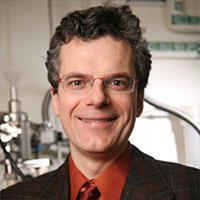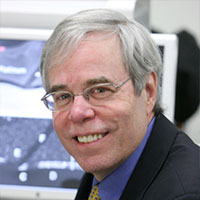The Amazing World of New Materials
Wednesday, October 3, 2012
Copper is one of the most ancient metals used by civilizations worldwide, and remains the metal of choice for modern cast sculptures. In this talk, I give three examples, spanning three continents and two millennia, of copper objects whose metallurgical structure, as investigated by advanced methods, provides insights in their historical, societal and technological context. First, I describe Chinese bronze fragments from large, intricate ceremonial vessels used two millenia ago, from the collections of the Art Institute of Chicago (AIC). Synchrotron x-ray methods allow for non-destructive examination of these fragments as well as priceless complete objects from the AIC collections. Second, I turn to copper fragments from a recently-excavated workshop in Cahokia (now in southern Illinois), the largest pre-Columbian North American city. A “forensic” analysis of the metal microstructure sheds light on the methods used to hammer copper nuggets into ceremonial breastplates. Finally, I focus on bronze and brass sculptures from the AIC collection, cast in Europe in the 20th century, from masters ranging from Matisse to Picasso. The chemical composition of these sculptures provides evidence on the foundry, casting method, age and provenance of these modern masterpieces. Virtually all materials used in practice consist of more than one chemical component. A classic example is sterling silver, which is a mixture of silver and copper. Pure silver is far too soft to use in most applications, so copper is added to strengthen it. In the past, the amount of copper needed to achieve the desired strength has been determined using considerable trial-and-error experimentation. Today we find ourselves at the threshold of a radically new approach to develop, or design, new materials in which materials are created and tested using computers. Computational approaches can now create vast catalogs of materials and their properties that have never been made. This has led to the Obama administration’s recently announced Materials Genome Initiative that promises to alter the manner in which materials, from engine blocks to battery components, are created. Illustrations of computational materials discovery and design will be given.
Speakers

David Dunand
- James N. and Margie M. Krebs Professor of Materials Science and Engineering
- Co-director, Initiative for Sustainability and Energy at Northwestern (ISEN)

Peter Voorhees
- Frank C. Engelhart Professor of Materials Science and Engineering
- Professor of Engineering Sciences and Applied Mathematics
